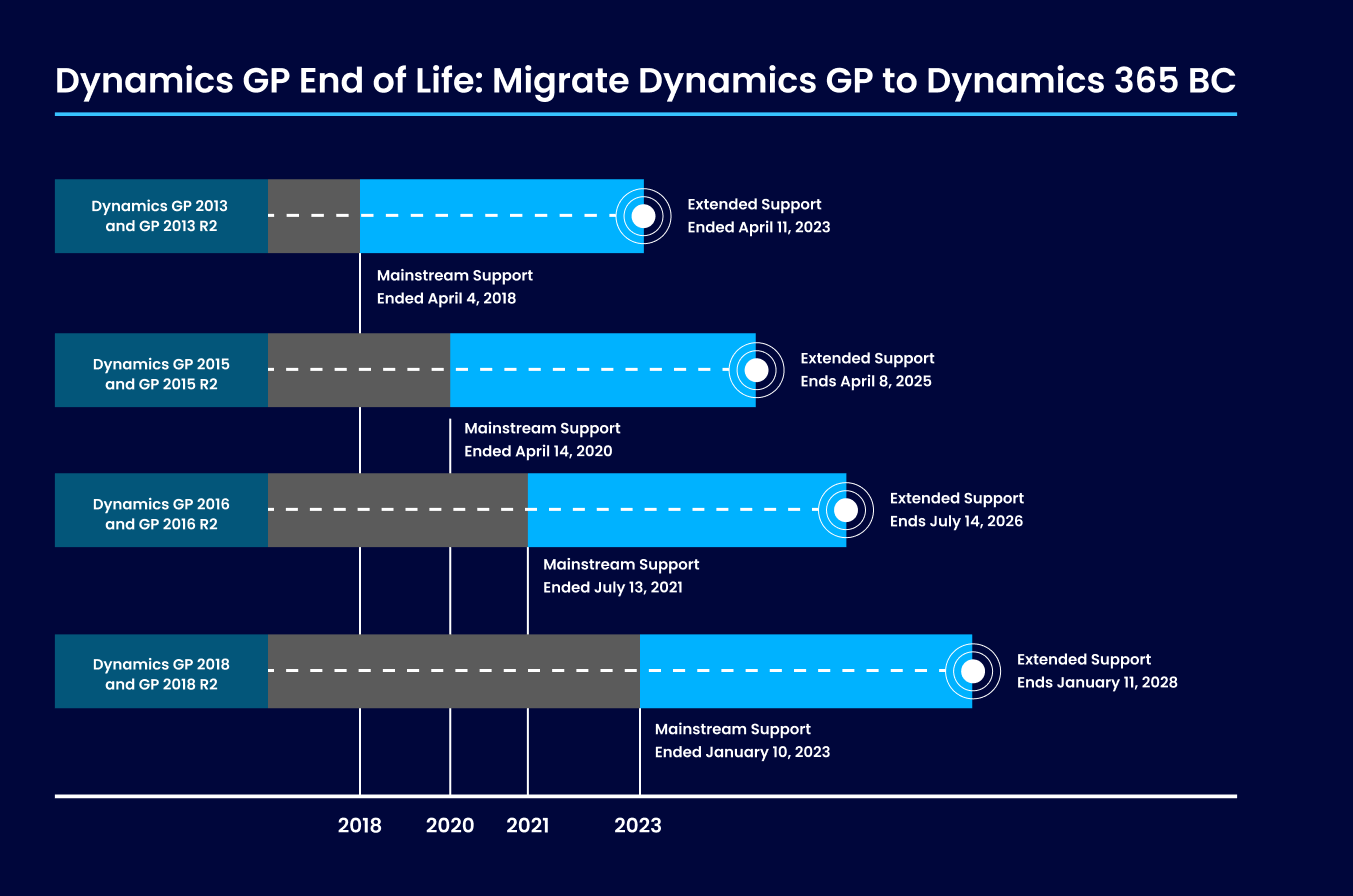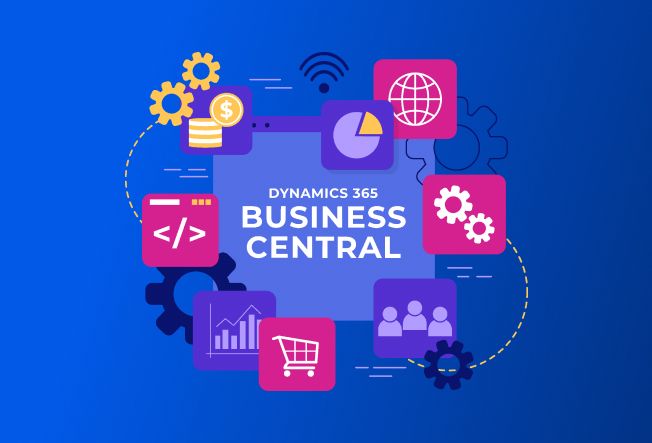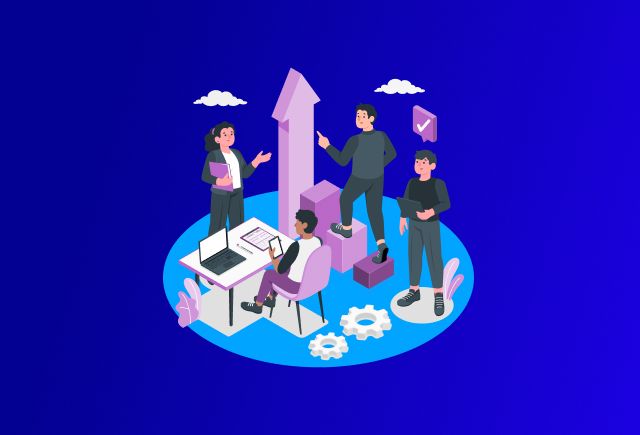Microsoft Great Plains End of Life [It's Time To Upgrade]
Dec 01, 2023 Aiswarya Madhu
Microsoft announced in April 2023 that new licenses of Dynamics GP will stop being sold by April 2025. Microsoft will also stop selling subscription-based licenses for Dynamics GP to new customers in 2026. This marks the Microsoft Great Plains End of Life, signaling the conclusion of new sales and subscriptions for this particular product.
With mainstream support ending in 2025, businesses are encouraged to consider Business Central as a modern alternative for effective business management.
Let's delve into the compelling reasons and benefits behind making this strategic move.
On this page
Microsoft Dynamics 365 Vs GP: A Comparative Analysis
Deployment
For deployment, Dynamics GP confines businesses to on-premises installations, limiting scalability as needs evolve. On the other hand, Dynamics 365's cloud-based deployment ensures unparalleled scalability, adapting seamlessly to changing business requirements.
Flexibility
Dynamics GP faces constraints in scalability due to its on-premises deployment model, limiting its ability to easily adapt to growing business demands. The constraints often manifest in challenges such as the need for significant infrastructure changes and potential disruptions during upgrades. In contrast, Dynamics 365's cloud-based deployment offers a dynamic and scalable architecture. It allows businesses to scale seamlessly without the limitations of on-premises infrastructure.
Target Company Size
Tailored for Small to Midsize Businesses (SMBs), Dynamics GP is designed to cater to a specific market segment. Conversely, Dynamics 365 is versatile, serving SMBs or divisions within larger enterprises, offering flexibility in its applicability.
Target User
Dynamics GP is optimized for teams with 3 to 250 users, catering to a more limited user base. Dynamics 365, however, accommodates broader user groups, ranging from 5 to 750, showcasing its scalability to meet diverse user needs.
AI & Predictive Tools
Dynamics GP provides basic AI capabilities with limited optimization potential, while Dynamics 365 boasts advanced AI-driven insights. This empowers predictive analytics, enhancing decision-making processes and operational efficiency.
Integration
Dynamics GP has relatively limited integration capabilities, hindering the creation of a cohesive digital ecosystem. In contrast, Dynamics 365 ensures seamless integration with the complete Microsoft ecosystem. This fosters synergy and promotes a unified digital environment.
Real-time Insights
On-premises architecture limits Dynamics GP in providing real-time insights, causing delays in decision-making. Dynamics 365, with its real-time analytics and reporting capabilities, offers instant visibility into operations, facilitating agile decision-making.
Future Support
Dynamics GP has limited long-term support, with older versions facing retirement under Microsoft's Lifecycle Policy. In comparison, Dynamics 365 ensures continuous updates and support through a modern lifecycle policy, ensuring ongoing security, feature enhancements, and long-term sustainability.
Scalability
Dynamics GP's limited scalability presents challenges, particularly for growing businesses. Dynamics 365, on the other hand, is highly scalable, accommodating growth without significant infrastructure changes. This ensures long-term viability for businesses experiencing expansion.
User Experience
Dynamics GP relies on a traditional interface and functionalities, offering a dated user experience. Dynamics 365 provides a modern, intuitive interface and user-centric design. This enhances the overall user experience, boosting productivity and user satisfaction.
Mobility & Access
Due to its on-premises deployment, Dynamics GP may restrict mobility and remote access. In contrast, Dynamics 365 offers anytime, anywhere access, facilitating remote work and mobile accessibility. This provides operational flexibility, a crucial aspect in today's dynamic business environment.
Customization & Upgrades
Dynamics GP's customization and upgrades can be complex and time-consuming. Dynamics 365 provides flexible customization options with easier, less disruptive upgrades. This adaptability ensures businesses can evolve without significant disruptions, catering to changing requirements.
Still confused about choosing between Microsoft Dynamics GP and Dynamics 365?
Still confused about choosing between Microsoft Dynamics GP and Dynamics 365?
Explore the top 6 compelling reasons to upgrade from Dynamics NAV to Business Central! Discover how this migration unlocks unparalleled scalability, enhanced features, and seamless cloud-based operations.
Microsoft Great Plains Vs Dynamics 365?
| Features | Microsoft Dynamics GP | Microsoft Dynamics 365 |
|---|---|---|
| Deployment | Limited to on-premises deployment, constraining scalability for businesses with evolving needs | Cloud-based deployment, offering unparalleled scalability and adaptability to changing business requirements |
| Flexibility | Constrained scalability makes it less suitable for growing businesses, hindering the ability to meet expanding demands | Highly flexible, capable of seamlessly adapting to the evolving needs of businesses, ensuring continuous scalability |
| Target Company Size | Tailored for Small to Midsize Businesses (SMBs) | Designed for SMBs or Divisions within Enterprises |
| Target User | Range Suited for teams of 3 to 250 users | Optimized for user groups ranging from 5 to 750 |
| AI & Predictive Tools | Basic AI capabilities provide limited optimization potential | Advanced AI-driven insights empower predictive analytics, enhancing decision-making and operational efficiency |
| Integration | Relatively limited integration capabilities with other Microsoft tools, restricting a cohesive digital ecosystem | Seamless integration with the complete Microsoft ecosystem, including Power Platform and Power BI, fostering synergy |
| Real-time Insights | On-premises architecture limits real-time insights, causing delays in decision-making | Real-time analytics and reporting capabilities offer instant visibility into operations, enabling agile decision-making |
| Future Support | Limited long-term support, with older versions facing retirement under Microsoft's Lifecycle Policy | Continuous updates, modern lifecycle policy ensuring ongoing support, security, and feature enhancements |
| Scalability | Limited scalability, particularly challenging for growing businesses | Highly scalable, accommodating growth without significant infrastructure changes, ensuring long-term business viability |
| User Experience | Traditional interface and functionalities offer a dated user experience | Modern, intuitive interface and user-centric design enhance user experience, boosting productivity and satisfaction |
| Mobility & Access | Restricted mobility and remote access due to on-premises deployment | Anytime, anywhere access facilitates remote work and mobile accessibility, providing operational flexibility |
| Customization & Upgrades | Customization and upgrades can be complex and time-consuming | Flexible customization options with easier, less disruptive upgrades, adapting to changing business requirements |
Key Reasons to Migrate from Dynamics GP to Dynamics 365
While Microsoft Great Plains End of Life date for Dynamics GP may seem like a distant 2026, waiting until the last minute to upgrade to a modern accounting and finance system software solution can put your business at significant risk.
So, to comprehend the urgency, it's crucial to delve into the Modern Lifecycle—a framework that aids in evaluating the current state of your Dynamics GP solution and strategizing a timely and effective upgrade.

Now, let’s explore the compelling reasons why planning your upgrade is imperative, even with time on your side:
- Inevitable Technical Obsolescence: While Microsoft has outlined the end dates for Dynamics GP, the reality is that the technology is progressively aging. This means your system is gradually becoming less compatible with modern integrations, industry standards, and evolving security protocols. Delaying migration increases the risk of technical obsolescence, potentially leading to system vulnerabilities and operational disruptions.
- Looming Compliance and Security Risks: As Dynamics GP reaches its sunset, the absence of security updates and compliance support will expose your system to increased risks. Hackers often target outdated systems with known vulnerabilities. Without ongoing security patches, your data and operations could be compromised, potentially resulting in compliance breaches and data loss.
- Transition Complexity and Time-Consumption: Migrating an ERP system, especially one as integral as Dynamics GP, demands meticulous planning, extensive testing, and smooth execution. Rushing this process under a time crunch could lead to errors, data loss, or operational downtime. Initiating the transition now allows ample time for strategic planning, gradual implementation, and thorough testing to ensure a seamless shift.
- Adapting to Changing Business Needs: Today's business landscape requires agility, adaptability, and real-time insights to drive growth. Dynamics GP, while reliable in the past, lacks the agility and flexibility that modern cloud-based solutions offer. Delaying the upgrade means postponing access to advanced functionalities, real-time analytics, and streamlined processes crucial for staying competitive.
- Resource Availability and Expertise: The migration process requires skilled resources and expertise. As the end dates approach, the demand for these resources may surge, making it challenging to secure the necessary expertise and support. Starting early ensures access to the required talent and avoids potential resource shortages or inflated costs due to heightened demand.
- Business Continuity and Preparedness: A well-timed migration minimizes the risk of disruption to your daily operations. It allows for a smoother transition, ensuring business continuity without the last-minute scramble to adapt, mitigating potential revenue loss or customer dissatisfaction due to unexpected system hiccups.
Discover the top 6 compelling reasons to upgrade from Dynamics NAV to Business Central.
Migrate Dynamics GP to Dynamics 365- Key Steps
-
Step 1: System Requirements
Confirm that your Dynamics GP version 2015 or later is compatible with the designated markets—United States, Canada, United Kingdom, or Australia—ensuring a seamless transition to Dynamics 365. Compatibility with these specific markets is crucial for a smooth and supported migration process.
-
Step 2: Initiate Cloud Migration Setup
Access the user-friendly assisted setup feature within Business Central to initiate the migration process. This intuitive tool will lead you through a carefully designed migration wizard, ensuring a step-by-step and hassle-free transfer of your data from GP to Dynamics 365.
-
Step 3: Customize Migration Settings
Utilize the GP Company Migration Configuration page in Migration Management to set global preferences for data migration. And then, define module preferences and choose between full data migration and specific master data based on your business requirements.
-
Step 4: Define Data Migration Scope
Make informed decisions regarding the scope of data migration—whether to migrate complete datasets or specific master data elements—tailored to your specific needs.
-
Step 5: Thorough Review and Validation
Run comprehensive data diagnostics to meticulously assess and resolve any potential issues before the migration process begins, ensuring a smooth transition.
Ready to upgrade from Dynamics GP to Dynamics Business Central?
Moreover, here's what's involved in the Dynamics GP to Dynamics 365 migration:
-
Fiscal Periods: Migrate GP fiscal periods as accounting periods to Dynamics 365. Historical years require closure post-migration, enabling further adjustments if needed.
-
Chart of Accounts: Map accounts from GP to Dynamics 365, including main account segments and defining dimensions for enhanced data accuracy.
-
Customer & Vendor Records: Migrate active customer/vendor records along with their addresses and outstanding transactions, allowing for seamless transaction handling post-migration.
-
Open Purchase Orders: Migrate open purchase orders to avoid re-entering pending transactions, ensuring continuity in procurement processes.
-
Inventory Items: Import inventory with valuation methods intact, ensuring smooth tracking of additional information like serial or lot numbers.
-
Check book Transactions: Migrate check books and unreconciled transactions to maintain financial continuity post-migration.
-
GP Historical Snapshot: Optionally migrate historical data to extension tables for future reference and analysis using reporting tools.
-
Data Diagnostics: Use Cloud Migration Management for pre-migration data checks, focusing on field length and duplicate item validations.
-
Moving GP Database to Azure Data Lake: Create a copy of the GP database in Azure Data Lake for access to historical data after migration.
Discover why it's crucial to act now with AX 2012 R3 End of Life approaching. Explore the benefits of migrating to Dynamics 365 F&O for future-proof business success. .
Bottom Line
Great Plains Dynamics End of life: FAQs
1. Is Microsoft Dynamics GP Going Away?
A: The end of support applies mainly to older versions under the Fixed Lifecycle Policy. If your implementation is 2016 or later, there's no need to worry. For those with older versions (e.g., Dynamics GP 2010, 2013, 2015), exploring alternatives is advisable.
2. What Is the Fixed Lifecycle Policy?
A: The Fixed Lifecycle Policy is a framework used by Microsoft to provide consistent and predictable support timelines for their products. It defines specific phases such as mainstream support, extended support, and end of support. For Dynamics GP, this means that older versions may reach the end of support, necessitating consideration of upgrading or transitioning to newer versions or alternatives.
3. What Is the Modern Lifecycle Policy?
A: Microsoft introduced this policy in October 2019 for versions like Dynamics GP 2016 and later. Unlike the Fixed Lifecycle Policy, it provides ongoing bug fixes, security updates, and support without a hard cut-off date, offering more flexibility.
4. What Are the Latest Changes?
A: Products under the Modern Lifecycle no longer have fixed end dates for fixes and updates. Regular updates throughout the year ensure continuous support. Although Microsoft initially caused confusion by not updating the Dynamics GP roadmap, recent changes affirm active development and support.
5. How Should I Move Forward with Microsoft GP?
A: For versions 2016 and later, ensure you download yearly updates under the Modern Lifecycle Policy. If you have an older version, check the Fixed Lifecycle Cycle for end-of-life details. Seeking professional assistance, especially for versions approaching end of life, can streamline transitions. Internet eBusiness Solutions (IES) offers expertise in Microsoft Dynamics products and can assist in optimizing your platform use.
For further Microsoft Dynamics GP upgrade assistance contact Nalashaa Digital today.
Recent Posts

8 Reasons to Choose Business Central [With Success Stories]
Nov 23, 2023

Dynamics NAV to Business Central Upgrade: A Comparative Study to Unlocking Growth Potential
Aug 22, 2023

.NET: Addressing Critical User Pain Points
Jan 27, 2021
Category
Our Expertise
About Author

Aiswarya Madhu
In the ever-changing tech landscape, my mission is to craft content that simplifies complex concepts and brings the wonders of modern technology closer to my audience. With a rich experience spanning over 2 years, I have honed my skills in crafting captivating and informative content for B2B domain that deeply resonates with the tech-savvy audience. When not working, you'll often find me with a steaming cup of tea and an inspiring book, fueling my curiosity and passion for knowledge.


